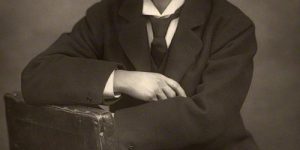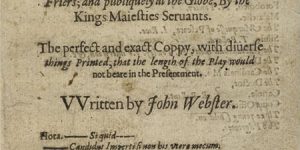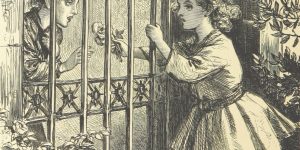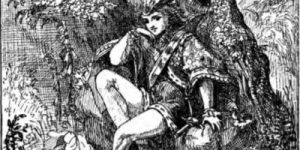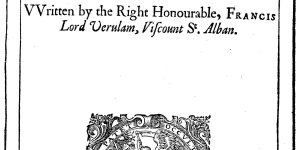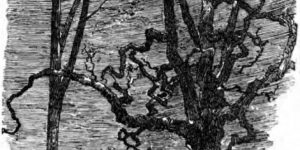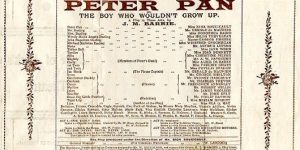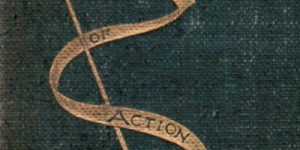The Great Boer War by Arthur Conan Doyle
The Great Boer War Preface To The Final Edition
The Great Boer War Chapter I. The Boer Nations
The Great Boer War Chapter II. The Cause Of Quarrel
The Great Boer War Chapter III. The Negotiations
The Great Boer War Chapter IV. The Eve Of War
The Great Boer War Chapter V. Talana Hill
The Great Boer War Chapter VI. Elandslaagte And Rietfontein
The Great Boer War Chapter VII. The Battle Of Ladysmith
The Great Boer War Chapter VIII. Lord Methuen’s Advance
The Great Boer War Chapter IX. Battle Of Magersfontein
The Great Boer War Chapter X. The Battle Of Stormberg
The Great Boer War Chapter XI. Battle Of Colenso
The Great Boer War Chapter XII. The Dark Hour
The Great Boer War Chapter XIII. The Siege Of Ladysmith
The Great Boer War Chapter XIV. The Colesberg Operations
The Great Boer War Chapter XV. Spion Kop
The Great Boer War Chapter XVI. Vaalkranz
The Great Boer War Chapter XVII. Buller’s Final Advance
The Great Boer War Chapter XVIII. The Siege And Relief Of Kimberley
The Great Boer War Chapter XIX. Paardeberg
The Great Boer War Chapter XX. Roberts’s Advance On Bloemfontein
The Great Boer War Chapter XXI. Strategic Effects Of Lord Roberts’s March
The Great Boer War Chapter XXII. The Halt At Bloemfontein
The Great Boer War Chapter XXIII. The Clearing Of The South-East
The Great Boer War Chapter XXIV. The Siege Of Mafeking
The Great Boer War Chapter XXV. The March On Pretoria
The Great Boer War Chapter XXVI. Diamond Hill—Rundle’s Operations
The Great Boer War Chapter XXVII. The Lines Of Communication
The Great Boer War Chapter XXVIII. The Halt At Pretoria
The Great Boer War Chapter XXIX. The Advance To Komatipoort
The Great Boer War Chapter XXX. The Campaign Of De Wet
The Great Boer War Chapter XXXI. The Guerilla Warfare In The Transvaal: Nooitgedacht
The Great Boer War Chapter XXXII. The Second Invasion Of Cape Colony
The Great Boer War Chapter XXXIII. The Northern Operations From January To April, 1901
The Great Boer War Chapter XXXIV. The Winter Campaign (April To September, 1901)
The Great Boer War Chapter XXXV. The Guerilla Operations In Cape Colony
The Great Boer War Chapter XXXVI. The Spring Campaign (September To December, 1901)
The Great Boer War Chapter XXXVII. The Campaign Of January To April, 1902
The Great Boer War Chapter XXXVIII. De La Rey’s Campaign Of 1902
The Great Boer War Chapter XXXIX. The End
The Great Boer War Chapter XXXVII. The Campaign Of January To April, 1902
At the opening of the year 1902 it was evident to every observer that the Boer resistance, spirited as it was, must be nearing its close. By a long succession of captures their forces were much reduced in numbers. They were isolated from the world, and had no means save precarious smuggling of renewing their supplies of ammunition. It was known also that their mobility, which had been their great strength, was decreasing, and that in spite of their admirable horsemastership their supply of remounts was becoming exhausted. An increasing number of the burghers were volunteering for service against their own people, and it was found that all fears as to this delicate experiment were misplaced, and that in the whole army there were no keener and more loyal soldiers.
The chief factor, however, in bringing the Boers to their knees was the elaborate and wonderful blockhouse system, which had been strung across the whole of the enemy’s country. The original blockhouses had been far apart, and were a hindrance and an annoyance rather than an absolute barrier to the burghers. The new models, however, were only six hundred yards apart, and were connected by such impenetrable strands of wire that a Boer pithily described it by saying that if one’s hat blew over the line anywhere between Ermelo and Standerton one had to walk round Ermelo to fetch it. Use was made of such barriers by the Spaniards in Cuba, but an application of them on such a scale over such an enormous tract of country is one of the curiosities of warfare, and will remain one of several novelties which will make the South African campaign for ever interesting to students of military history.
The spines of this great system were always the railway lines, which were guarded on either side, and down which, as down a road, went flocks, herds, pedestrians, and everything which wished to travel in safety. From these long central cords the lines branched out to right and left, cutting up the great country into manageable districts. A category of them would but weary the reader, but suffice it that by the beginning of the year the south-east of the Transvaal and the north-east of the Orange River Colony, the haunts of Botha and De Wet, had been so intersected that it was obvious that the situation must soon be impossible for both of them. Only on the west of the Transvaal was there a clear run for De la Rey and Kemp. Hence it was expected, as actually occurred, that in this quarter the most stirring events of the close of the campaign would happen.
General Bruce Hamilton in the Eastern Transvaal had continued the energetic tactics which had given such good results in the past. With the new year his number of prisoners fell, but he had taken so many, and had hustled the remainder to such an extent, that the fight seemed to have gone out of the Boers in this district. On January 1st he presented the first-fruits of the year in the shape of twenty-two of Grobler’s burghers. On the 3rd he captured forty-nine, while Wing, co-operating with him, took twenty more. Among these was General Erasmus, who had helped, or failed to help, General Lucas Meyer at Talana Hill. On the 10th Colonel Wing’s column, which was part of Hamilton’s force, struck out again and took forty-two prisoners, including the two Wolmarans. Only two days later Hamilton returned to the same spot, and was rewarded with thirty-two more captures. On the 18th he took twenty-seven, on the 24th twelve, and on the 26th no fewer than ninety. So severe were these blows, and so difficult was it for the Boers to know how to get away from an antagonist who was ready to ride thirty miles in a night in order to fall upon their laager, that the enemy became much scattered and too demoralised for offensive operations. Finding that they had grown too shy in this much shot over district, Hamilton moved farther south, and early in March took a cast round the Vryheid district, where he made some captures, notably General Cherry Emmett, a descendant of the famous Irish rebel, and brother-in-law of Louis Botha. For all these repeated successes it was to the Intelligence Department, so admirably controlled by Colonel Wools-Sampson, that thanks are mainly due.
Whilst Bruce Hamilton was operating so successfully in the Ermelo district, several British columns under Plumer, Spens, and Colville were stationed some fifty miles south to prevent the fugitives from getting away into the mountainous country which lies to the north of Wakkerstroom. On January 3rd a small force of Plumer’s New Zealanders had a brisk skirmish with a party of Boers, whose cattle they captured, though at some loss to themselves. These Boers were strongly reinforced, however, and when on the following day Major Vallentin pursued them with fifty men he found himself at Onverwacht in the presence of several hundred of the enemy, led by Oppermann and Christian Botha. Vallentin was killed and almost all of his small force were hit before British reinforcements, under Colonel Pulteney, drove the Boers off. Nineteen killed and twenty-three wounded were our losses in this most sanguinary little skirmish. Nine dead Boers, with Oppermann himself, were left upon the field of battle. His loss was a serious one to the enemy, as he was one of their most experienced Generals.
From that time until the end these columns, together with Mackenzie’s column to the north of Ermelo, continued to break up all combinations, and to send in their share of prisoners to swell Lord Kitchener’s weekly list. A final drive, organised on April 11th against the Standerton line, resulted in 134 prisoners.
In spite of the very large army in South Africa, so many men were absorbed by the huge lines of communications and the blockhouse system that the number available for active operations was never more than forty or fifty thousand men. With another fifty thousand there is no doubt that at least six months would have been taken from the duration of the war. On account of this shorthandedness Lord Kitchener had to leave certain districts alone, while he directed his attention to those which were more essential. Thus to the north of the Delagoa Railway line there was only one town, Lydenburg, which was occupied by the British. They had, however, an energetic commander in Park of the Devons. This leader, striking out from his stronghold among the mountains, and aided by Urmston from Belfast, kept the commando of Ben Viljoen and the peripatetic Government of Schalk Burger continually upon the move. As already narrated, Park fought a sharp night action upon December 19th, after which, in combination with Urmston, he occupied Dulstroom, only missing the government by a few hours. In January Park and Urmston were again upon the war-path, though the incessant winds, fogs, and rains of that most inclement portion of the Transvaal seriously hampered their operations. Several skirmishes with the commandos of Muller and Trichardt gave no very decisive result, but a piece of luck befell the British on January 25th in the capture of General Viljoen by an ambuscade cleverly arranged by Major Orr in the neighbourhood of Lydenburg. Though a great firebrand before the war, Viljoen had fought bravely and honourably throughout the contest, and he had won the respect and esteem of his enemy.
Colonel Park had had no great success in his last two expeditions, but on February 20th he made an admirable march, and fell upon a Boer laager which lay in placid security in the heart of the hills. One hundred and sixty-four prisoners, including many Boer officers, were the fruits of this success, in which the National Scouts, or ‘tame Boers,’ as they were familiarly called, played a prominent part. This commando was that of Middelburg, which was acting as escort to the government, who again escaped dissolution. Early in March Park was again out on trek, upon one occasion covering seventy miles in a single day. Nothing further of importance came from this portion of the seat of war until March 23rd, when the news reached England that Schalk Burger, Reitz, Lucas Meyer, and others of the Transvaal Government had come into Middelburg, and that they were anxious to proceed to Pretoria to treat. On the Eastern horizon had appeared the first golden gleam of the dawning peace.
Having indicated the course of events in the Eastern Transvaal, north and south of the railway line, I will now treat one or two incidents which occurred in the more central and northern portions of the country. I will then give some account of De Wet’s doings in the Orange River Colony, and finally describe that brilliant effort of De la Rey’s in the west which shed a last glory upon the Boer arms.
In the latter days of December, Colenbrander and Dawkins operating together had put in a great deal of useful work in the northern district, and from Nylstrom to Pietersburg the burghers were continually harried by the activity of these leaders. Late in the month Dawkins was sent down into the Orange River Colony in order to reinforce the troops who were opposed to De Wet. Colenbrander alone, with his hardy colonial forces, swept through the Magaliesburg, and had the double satisfaction of capturing a number of the enemy and of heading off and sending back a war party of Linchwe’s Kaffirs who, incensed by a cattle raid of Kemp’s, were moving down in a direction which would have brought them dangerously near to the Dutch women and children. This instance and several similar ones in the campaign show how vile are the lies which have been told of the use, save under certain well-defined conditions, of armed natives by the British during the war. It would have been a perfectly easy thing at any time for the Government to have raised all the fighting native races of South Africa, but it is not probable that we, who held back our admirable and highly disciplined Sikhs and Ghoorkas, would break our self-imposed restrictions in order to enrol the inferior but more savage races of Africa. Yet no charge has been more often repeated and has caused more piteous protests among the soft-hearted and soft-headed editors of Continental journals.
The absence of Colenbrander in the Rustenburg country gave Beyers a chance of which he was not slow to avail himself. On January 24th, in the early morning, he delivered an attack upon Pietersburg itself, but he was easily driven off by the small garrison. It is probable, however, that the attack was a mere feint in order to enable a number of the inmates of the refugee camp to escape. About a hundred and fifty made off, and rejoined the commandos. There were three thousand Boers in all in this camp, which was shortly afterwards moved down to Natal in order to avoid the recurrence of such an incident.
Colenbrander, having returned to Pietersburg once more, determined to return Beyers’s visit, and upon April 8th he moved out with a small force to surprise the Boer laager. The Inniskilling Fusiliers seized the ground which commanded the enemy’s position. The latter retreated, but were followed up, and altogether about one hundred and fifty were killed, wounded, and taken. On May 3rd a fresh operation against Beyers was undertaken, and resulted in about the same loss to the Boers. On the other hand, the Boers had a small success against Kitchener’s Scouts, killing eighteen and taking thirty prisoners.
There is one incident, however, in connection with the war in this region which one would desire to pass over in silence if such a course were permissible. Some eighty miles to the east of Pietersburg is a wild part of the country called the Spelonken. In this region an irregular corps, named the Bushveld Carbineers, had been operating. It was raised in South Africa, but contained both Colonials and British in its ranks. Its wild duties, its mixed composition, and its isolated situation must have all militated against discipline and restraint, and it appears to have degenerated into a band not unlike those Southern ‘bush-whackers’ in the American war to whom the Federals showed little mercy. They had given short shrift to the Boer prisoners who had fallen into their hands, the excuse offered for their barbarous conduct being that an officer who had served in the corps had himself been murdered by the Boers. Such a reason, even if it were true, could of course offer no justification for indiscriminate revenge. The crimes were committed in July and August 1901, but it was not until January 1902 that five of the officers were put upon their trial and were found to be guilty as principals or accessories of twelve murders. The corps was disbanded, and three of the accused officers, Handcock, Wilton, and Morant, were sentenced to death, while another, Picton, was cashiered. Handcock and Morant were actually executed. This stern measure shows more clearly than volumes of argument could do how high was the standard of discipline in the British Army, and how heavy was the punishment, and how vain all excuses, where it had been infringed. In the face of this actual outrage and its prompt punishment how absurd becomes that crusade against imaginary outrages preached by an ignorant press abroad, and by renegade Englishmen at home.
To the south of Johannesburg, half-way between that town and the frontier, there is a range of hills called the Zuikerboschrand, which extends across from one railway system to the other. A number of Boers were known to have sought refuge in this country, so upon February 12th a small British force left Klip River Post in order to clear them out. There were 320 men in all, composing the 28th Mounted Infantry, drawn from the Lancashire Fusiliers, Warwicks, and Derbys, most of whom had just arrived from Malta, which one would certainly imagine to be the last place where mounted infantry could be effectively trained. Major Dowell was in command. An advance was made into the hilly country, but it was found that the enemy was in much greater force than had been imagined. The familiar Boer tactics were used with the customary success. The British line was held by a sharp fire in front, while strong flanking parties galloped round each of the wings. It was with great difficulty that any of the British extricated themselves from their perilous position, and the safety of a portion of the force was only secured by the devotion of a handful of officers and men, who gave their lives in order to gain time for their comrades to get away. Twelve killed and fifty wounded were our losses in this unfortunate skirmish, and about one hundred prisoners supplied the victors with a useful addition to their rifles and ammunition. A stronger British force came up next day, and the enemy were driven out of the hills.
A week later, upon February 18th, there occurred another skirmish at Klippan, near Springs, between a squadron of the Scots Greys and a party of Boers who had broken into this central reserve which Lord Kitchener had long kept clear of the enemy. In this action the cavalry were treated as roughly as the mounted infantry had been the week before, losing three officers killed, eight men killed or wounded, and forty-six taken. They had formed a flanking party to General Gilbert Hamilton’s column, but were attacked and overwhelmed so rapidly that the blow had fallen before their comrades could come to their assistance.
One of the consequences of the successful drives about to be described in the Orange River Colony was that a number of the Free Staters came north of the Vaal in order to get away from the extreme pressure upon the south. At the end of March a considerable number had reinforced the local commandos in that district to the east of Springs, no very great distance from Johannesburg, which had always been a storm centre. A cavalry force was stationed at this spot which consisted at that time of the 2nd Queen’s Bays, the 7th Hussars, and some National Scouts, all under Colonel Lawley of the Hussars. After a series of minor engagements east of Springs, Lawley had possessed himself of Boschman’s Kop, eighteen miles from that town, close to the district which was the chief scene of Boer activity. From this base he despatched upon the morning of April 1st three squadrons of the Bays under Colonel Fanshawe, for the purpose of surprising a small force of the enemy which was reported at one of the farms. Fanshawe’s strength was about three hundred men.
The British cavalry found themselves, however, in the position of the hunter who, when he is out for a snipe, puts up a tiger. All went well with the expedition as far as Holspruit, the farm which they had started to search. Commandant Pretorius, to whom it belonged, was taken by the energy of Major Vaughan, who pursued and overtook his Cape cart. It was found, however, that Alberts’s commando was camped at the farm, and that the Bays were in the presence of a very superior force of the enemy. The night was dark, and when firing began it was almost muzzle to muzzle, with the greatest possible difficulty in telling friend from foe. The three squadrons fell back upon some rising ground, keeping admirable order under most difficult circumstances. In spite of the darkness the attack was pressed fiercely home, and with their favourite tactics the burghers rapidly outflanked the position taken up by the cavalry. The British moved by alternate squadrons on to a higher rocky kopje on the east, which could be vaguely distinguished looming in the darkness against the skyline. B squadron, the last to retire, was actually charged and ridden through by the brave assailants, firing from their saddles as they broke through the ranks. The British had hardly time to reach the kopje and to dismount and line its edge when the Boers, yelling loudly, charged with their horses up the steep flanks. Twice they were beaten back, but the third time they seized one corner of the hill and opened a hot fire upon the rear of the line of men who were defending the other side. Dawn was now breaking, and the situation most serious, for the Boers were in very superior numbers and were pushing their pursuit with the utmost vigour and determination. A small party of officers and men whose horses had been shot covered the retreat of their comrades, and continued to fire until all of them, two officers and twenty-three men, were killed or wounded, the whole of their desperate defence being conducted within from thirty to fifty yards of the enemy. The remainder of the regiment was now retired to successive ridges, each of which was rapidly outflanked by the Boers, whose whole method of conducting their attack was extraordinarily skilful. Nothing but the excellent discipline of the overmatched troopers prevented the retreat from becoming a rout. Fortunately, before the pressure became intolerable the 7th Hussars with some artillery came to the rescue, and turned the tide. The Hussars galloped in with such dash that some of them actually got among the Boers with their swords, but the enemy rapidly fell back and disappeared.
In this very sharp and sanguinary cavalry skirmish the Bays lost eighty killed and wounded out of a total force of 270. To stand such losses under such circumstances, and to preserve absolute discipline and order, is a fine test of soldierly virtue. The adjutant, the squadron leaders, and six out of ten officers were killed or wounded. The Boers lost equally heavily. Two Prinsloos, one of them a commandant, and three field-cornets were among the slain, with seventy other casualties. The force under General Alberts was a considerable one, not fewer than six hundred rifles, so that the action at Holspruit is one which adds another name of honour to the battle-roll of the Bays. It is pleasing to add that in this and the other actions which were fought at the end of the war our wounded met with kindness and consideration from the enemy.
We may now descend to the Orange River Colony and trace the course of those operations which were destined to break the power of De Wet’s commando. On these we may concentrate our attention, for the marchings and gleanings and snipings of the numerous small columns in the other portions of the colony, although they involved much arduous and useful work, do not claim a particular account.
After the heavy blow which he dealt Firmin’s Yeomanry, De Wet retired, as has been told, into the Langberg, whence he afterwards retreated towards Reitz. There he was energetically pushed by Elliot’s columns, which had attained such mobility that 150 miles were performed in three days within a single week. Our rough schoolmasters had taught us our lesson, and the soldiering which accomplished the marches of Bruce Hamilton, Elliot, Rimington, and the other leaders of the end of the war was very far removed from that which is associated with ox-wagons and harmoniums.
Moving rapidly, and covering himself by a succession of rearguard skirmishes, De Wet danced like a will-o’the-wisp in front of and round the British columns. De Lisle, Fanshawe, Byng, Rimington, Dawkins, and Rawlinson were all snatching at him and finding him just beyond their finger-tips. The master-mind at Pretoria had, however, thought out a scheme which was worthy of De Wet himself in its ingenuity. A glance at the map will show that the little branch from Heilbron to Wolvehoek forms an acute angle with the main line. Both these railways were strongly blockhoused and barbed-wired, so that any force which was driven into the angle, and held in it by a force behind it, would be in a perilous position. To attempt to round De Wet’s mobile burghers into this obvious pen would have been to show one’s hand too clearly. In vain is the net laid in sight of the bird. The drive was therefore made away from this point, with the confident expectation that the guerilla chief would break back through the columns, and that they might then pivot round upon him and hustle him so rapidly into the desired position that he would not realise his danger until it was too late. Byng’s column was left behind the driving line to be ready for the expected backward break. All came off exactly as expected. De Wet doubled back through the columns, and one of his commandos stumbled upon Byng’s men, who were waiting on the Vlei River to the west of Reitz. The Boers seem to have taken it for granted that, having passed the British driving line, they were out of danger, and for once it was they who were surprised. The South African Light Horse, the New Zealanders, and the Queensland Bushmen all rode in upon them. A fifteen-pounder, the one taken at Tweefontein, and two pom-poms were captured, with thirty prisoners and a considerable quantity of stores.
This successful skirmish was a small matter, however, compared to the importance of being in close touch with De Wet and having a definite objective for the drive. The columns behind expanded suddenly into a spray of mounted men forming a continuous line for over sixty miles. On February 5th the line was advancing, and on the 6th it was known that De Wet was actually within the angle, the mouth of which was spanned by the British line. Hope ran high in Pretoria. The space into which the burgher chief had been driven was bounded by sixty-six miles of blockhouse and wire on one side and thirty on the other, while the third side of the triangle was crossed by fifty-five miles of British horsemen, flanked by a blockhouse line between Kroonstad and Lindley. The tension along the lines of defence was extreme. Infantry guarded every yard of them, and armoured trains patrolled them, while at night searchlights at regular intervals shed their vivid rays over the black expanse of the veld and illuminated the mounted figures who flitted from time to time across their narrow belts of light.
On the 6th De Wet realised his position, and with characteristic audacity and promptness he took means to clear the formidable toils which had been woven round him. The greater part of his command scattered, with orders to make their way as best they might out of the danger. Working in their own country, where every crease and fold of the ground was familiar to them, it is not surprising that most of them managed to make their way through gaps in the attenuated line of horsemen behind them. A few were killed, and a considerable number taken, 270 being the respectable total of the prisoners. Three or four slipped through, however, for every one who stuck in the meshes. De Wet himself was reported to have made his escape by driving cattle against the wire fences which enclosed him. It seems, however, to have been nothing more romantic than a wire-cutter which cleared his path, though cattle no doubt made their way through the gap which he left. With a loss of only three of his immediate followers be Wet won his way out of the most dangerous position which even his adventurous career had ever known. Lord Kitchener had descended to Wolvehoek to be present at the climax of the operations, but it was not fated that he was to receive the submission of the most energetic of his opponents, and he returned to Pretoria to weave a fresh mesh around him.
This was not hard to do, as the Boer General had simply escaped from one pen into another, though a larger one. After a short rest to restore the columns, the whole pack were full cry upon his heels once more. An acute angle is formed by the Wilge River on one side and the line of blockhouses between Harrismith and Van Reenen upon the other. This was strongly manned by troops and five columns; those of Rawlinson, Nixon, Byng, Rimington, and Keir herded the broken commandos into the trap. From February 20th the troops swept in an enormous skirmish line across the country, ascending hills, exploring kloofs, searching river banks, and always keeping the enemy in front of them. At last, when the pressure was severely felt, there came the usual breakback, which took the form of a most determined night attack upon the British line. This was delivered shortly after midnight on February 23rd. It struck the British cordon at the point of juncture between Byng’s column and that of Rimington. So huge were the distances which had to be covered, and so attenuated was the force which covered them, that the historical thin red line was a massive formation compared to its khaki equivalent. The chain was frail and the links were not all carefully joined, but each particular link was good metal, and the Boer impact came upon one of the best. This was the 7th New Zealand Contingent, who proved themselves to be worthy comrades to their six gallant predecessors. Their patrols were broken by the rush of wild, yelling, firing horsemen, but the troopers made a most gallant resistance. Having pierced the line the Boers, who were led in their fiery rush by Manie Botha, turned to their flank, and, charging down the line of weak patrols, overwhelmed one after another and threatened to roll up the whole line. They had cleared a gap of half a mile, and it seemed as if the whole Boer force would certainly escape through so long a gap in the defences. The desperate defence of the New Zealanders gave time, however, for the further patrols, which consisted of Cox’s New South Wales Mounted Infantry, to fall back almost at right angles so as to present a fresh face to the attack. The pivot of the resistance was a maxim gun, most gallantly handled by Captain Begbie and his men. The fight at this point was almost muzzle to muzzle, fifty or sixty New Zealanders and Australians with the British gunners holding off a force of several hundred of the best fighting men of the Boer forces. In this desperate duel many dropped on both sides. Begbie died beside his gun, which fired eighty rounds before it jammed. It was run back by its crew in order to save it from capture. But reinforcements were coming up, and the Boer attack was beaten back. A number of them had escaped, however, through the opening which they had cleared, and it was conjectured that the wonderful De Wet was among them. How fierce was the storm which had broken on the New Zealanders may be shown by their roll of twenty killed and forty wounded, while thirty dead Boers were picked up in front of their picket line. Of eight New Zealand officers seven are reported to have been hit, an even higher proportion than that which the same gallant race endured at the battle of Rhenoster Kop more than a year before.
It was feared at first that the greater part of the Boers might have escaped upon this night of the 23rd, when Manie Botha’s storming party burst through the ranks of the New Zealanders. It was soon discovered that this was not so, and the columns as they closed in had evidence from the numerous horsemen who scampered aimlessly over the hills in front of them that the main body of the enemy was still in the toils. The advance was in tempestuous weather and over rugged country, but the men were filled with eagerness, and no precaution was neglected to keep the line intact.
This time their efforts were crowned with considerable success. A second attempt was made by the corraled burghers to break out on the night of February 26th, but it was easily repulsed by Nixon. The task of the troopers as the cordon drew south was more and more difficult, and there were places traversed upon the Natal border where an alpen stock would have been a more useful adjunct than a horse. At six o’clock on the morning of the 27th came the end. Two Boers appeared in front of the advancing line of the Imperial Light Horse and held up a flag. They proved to be Truter and De Jager, ready to make terms for their commando. The only terms offered were absolute surrender within the hour. The Boers had been swept into a very confined space, which was closely hemmed in by troops, so that any resistance must have ended in a tragedy. Fortunately there was no reason for desperate councils in their case, since they did not fight as Lotter had done, with the shadow of judgment hanging over him. The burghers piled arms, and all was over.
The total number captured in this important drive was 780 men, including several leaders, one of whom was De Wet’s own son. It was found that De Wet himself had been among those who had got away through the picket lines on the night of the 23rd. Most of the commando were Transvaalers, and it was typical of the wide sweep of the net that many of them were the men who had been engaged against the 28th Mounted Infantry in the district south of Johannesburg upon the 12th of the same month. The loss of 2000 horses and 50,000 cartridges meant as much as that of the men to the Boer army. It was evident that a few more such blows would clear the Orange River Colony altogether.
The wearied troopers were allowed little rest, for in a couple of days after their rendezvous at Harrismith they were sweeping back again to pick up all that they had missed. This drive, which was over the same ground, but sweeping backwards towards the Heilbron to Wolvehoek line, ended in the total capture of 147 of the enemy, who were picked out of holes, retrieved from amid the reeds of the river, called down out of trees, or otherwise collected. So thorough were the operations that it is recorded that the angle which formed the apex of the drive was one drove of game upon the last day, all the many types of antelope, which form one of the characteristics and charms of the country, having been herded into it.
More important even than the results of the drive was the discovery of one of De Wet’s arsenals in a cave in the Vrede district. Half-way down a precipitous krantz, with its mouth covered by creepers, no writer of romance could have imagined a more fitting headquarters for a guerilla chief. The find was made by Ross’s Canadian Scouts, who celebrated Dominion Day by this most useful achievement. Forty wagon-loads of ammunition and supplies were taken out of the cave. De Wet was known to have left the north-east district, and to have got across the railway, travelling towards the Vaal as if it were his intention to join De la Rey in the Transvaal. The Boer resistance had suddenly become exceedingly energetic in that part, and several important actions had been fought, to which we will presently turn.
Before doing so it would be as well to bring the chronicle of events in the Orange River Colony down to the conclusion of peace. There were still a great number of wandering Boers in the northern districts and in the frontier mountains, who were assiduously, but not always successfully, hunted down by the British troops. Much arduous and useful work was done by several small columns, the Colonial Horse and the Artillery Mounted Rifles especially distinguishing themselves. The latter corps, formed from the gunners whose field-pieces were no longer needed, proved themselves to be a most useful body of men; and the British gunner, when he took to carrying his gun, vindicated the reputation which he had won when his gun had carried him.
From the 1st to the 4th of May a successful drive was conducted by many columns in the often harried but never deserted Lindley to Kroonstad district. The result was propitious, as no fewer than 321 prisoners were brought in. Of these, 150 under Mentz were captured in one body as they attempted to break through the encircling cordon.
Amid many small drives and many skirmishes, one stands out for its severity. It is remarkable as being the last action of any importance in the campaign. This was the fight at Moolman’s Spruit, near Ficksburg, upon April 20th, 1902. A force of about one hundred Yeomanry and forty Mounted Infantry (South Staffords) was despatched by night to attack an isolated farm in which a small body of Boers was supposed to be sleeping. Colonel Perceval was in command. The farm was reached after a difficult march, but the enemy were found to have been forewarned, and to be in much greater strength than was anticipated. A furious fire was opened on the advancing troops, who were clearly visible in the light of a full moon. Sir Thomas Fowler was killed and several men of the Yeomanry were hit. The British charged up to the very walls, but were unable to effect an entrance, as the place was barricaded and loopholed. Captain Blackwood, of the Staffords, was killed in the attack. Finding that the place was impregnable, and that the enemy outnumbered him, Colonel Perceval gave the order to retire, a movement which was only successfully carried out because the greater part of the Boer horses had been shot. By morning the small British force had extricated itself, from its perilous position with a total loss of six killed, nineteen wounded, and six missing. The whole affair was undoubtedly a cleverly planned Boer ambush, and the small force was most fortunate in escaping destruction.
One other isolated incident may be mentioned here, though it occurred far away in the Vryheid district of the Transvaal. This was the unfortunate encounter between Zulus and Boers by which the latter lost over fifty of their numbers under deplorable circumstances. This portion of the Transvaal has only recently been annexed, and is inhabited by warlike Zulus, who are very different from the debased Kaffirs of the rest of the country. These men had a blood-feud against the Boers, which was embittered by the fact that they had lost heavily through Boer depredations. Knowing that a party of fifty-nine men were sleeping in a farmhouse, the Zulus crept on to it and slaughtered every man of the inmates. Such an incident is much to be regretted, and yet, looking back upon the long course of the war, and remembering the turbulent tribes who surrounded the combatants—Swazis, Basutos, and Zulus—we may well congratulate ourselves that we have been able to restrain those black warriors, and to escape the brutalities and the bitter memories of a barbarian invasion.
The Great Boer War Chapter XXXVIII. De La Rey’s Campaign Of 1902

